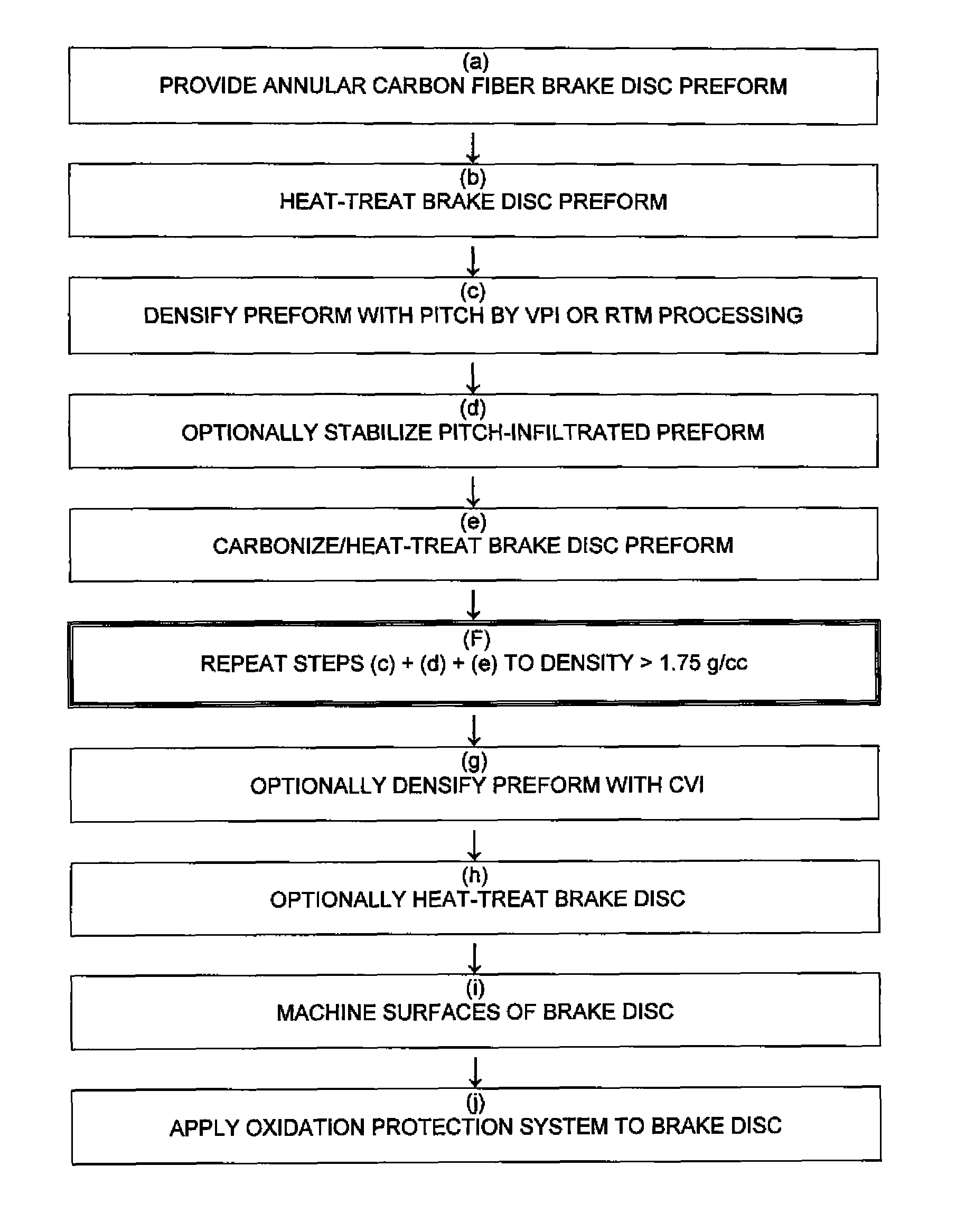Pitch-only densification of carbon-carbon composite materials
a carbon-carbon composite material and composite material technology, applied in the field of carbon-carbon composite material manufacturing, can solve the problems of low final densities, low final density, and long cycle time (typically about 5 cycles), and achieve the effects of reducing the density, reducing the cost of carbon-carbon composite manufacturing, and improving the quality of carbon-carbon composite materials
- Summary
- Abstract
- Description
- Claims
- Application Information
AI Technical Summary
Benefits of technology
Problems solved by technology
Method used
Image
Examples
examples
Specific embodiments of the present invention may employ the following densification cycles
[0034](1) Pitch-Only Densification:[0035]Fabricating a carbon fiber preform,[0036]heat-treating the carbon fiber preform at 1400-2540° C.,[0037]infiltrating the carbon fiber preform with a high carbon-yielding pitch using VPI (vacuum pressure infiltration) or resin transfer molding (RTM) process,[0038]optionally stabilize the high char-yielding pitch-infiltrated preform,[0039]repeating the infiltration step and optionally the stabilization step to achieve a final density of >1.75 g / cc (and usually above 1.8 g / cc),[0040]heat-treating the preform at 1400-2000° C., machining the surfaces of the preform, and[0041]applying an oxidation protection system.
[0042](2) Densification with Pitch and CVI / CVD:[0043]Fabricating a carbon fiber preform,[0044]heat-treating the carbon fiber preform at 1400-2540° C.,[0045]infiltrating the carbon fiber preform with a high carbon-yielding pitch using VPI (vacuum pre...
PUM
| Property | Measurement | Unit |
|---|---|---|
| temperature | aaaaa | aaaaa |
| density | aaaaa | aaaaa |
| density | aaaaa | aaaaa |
Abstract
Description
Claims
Application Information
 Login to View More
Login to View More - R&D
- Intellectual Property
- Life Sciences
- Materials
- Tech Scout
- Unparalleled Data Quality
- Higher Quality Content
- 60% Fewer Hallucinations
Browse by: Latest US Patents, China's latest patents, Technical Efficacy Thesaurus, Application Domain, Technology Topic, Popular Technical Reports.
© 2025 PatSnap. All rights reserved.Legal|Privacy policy|Modern Slavery Act Transparency Statement|Sitemap|About US| Contact US: help@patsnap.com


